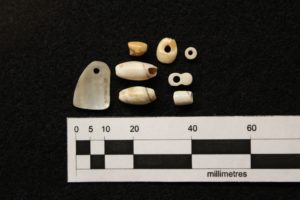Article begins
Preservation and dissemination of data are at the heart of efforts to digitize and make accessible collections of legacy data from archaeological excavations.
Despite the vast amount of fieldwork that is conducted each year, reports and data are often filed away for safekeeping and remain inaccessible to those without the means to access this information. Artifacts and field records from early excavations were often dispersed among projects’ various stakeholders, a consequence of the collaborative efforts of archaeological projects. Although this facilitates public engagement across a wide geography, it hinders any potential research that might be conducted. Not only does research that involves travel to institutions require careful coordination, it also places a significant cost-related burden on the researcher, which can result in the desertion of a project by students and faculty members with limited time and funding opportunities.
A recent push towards exhuming “gray literature” from their inaccessible storage facilities has resulted in the creation of online repositories
Digital efforts in resuscitating archaeological legacy data have created new possibilities for research and incorporate a high degree of interactivity that fosters public engagement and connectivity.
Within my brief research time at the Salmon Ruins Museum, I analyzed the temporal and spatial distribution of shell ornaments in particular spaces, such as great houses and kivas. Through a re-examination of field records, I learned the inhabitants of Salmon Pueblo placed crafted shell objects within six of the eight pilasters of the Tower Kiva—evidence of ceremonial activities, independent of social memory. Having access to these digital records allowed me to devote my brief time at the Salmon Ruins Museum to artifact analysis rather than poring through the physical archival copies. Using digital archives not only leads to a more comprehensive analysis, it is a win-win situation. I have recovered new information that will be accessible to SPARC users, which includes new shell species, giving us hints about the Salmon Pueblo inhabitants being involved in a vast marine shell network that included the Gulf of California and the southern Pacific coast of California. My own research thereby contributes to the ongoing collection of digital information, as the photographs and data I collected through examination of the shell ornaments have been shared with SPARC.

Selected shell ornaments from Room 62 at Salmon Pueblo. Jade Robinson
OpenContext and The Digital Archaeological Record (tDAR) have dedicated their efforts to preserving and broadening access to data. Other projects, such as the Chaco Research Archive (CRA), have built comprehensive databases that store records from multiple archival sources, providing access to data that is otherwise physically dispersed among several institutions. The most important contribution of SPARC and other digital repositories is their giving equal access to legacy data for students, scholars, and the public. Scholars and students now have immense troves of resources from which to extract data for research. No longer are archives languishing in file cabinets, untouched and inaccessible to the expanse of researchers who will never consult them; thanks to the surge in a digital-minded archaeology, these archives have been resuscitated.
Jade Robison graduated from the MA program at University of Nebraska-Lincoln and is a 2018 AD Student Membership Award winner.
Sandra L. López Varela is section news contributing editor for the Archaeology Division.
Cite as: Robison, Jade. 2020. “The Digital Legacy Collections of Salmon Pueblo.” Anthropology News website, March 5, 2020. DOI: 10.1111/AN.1365

